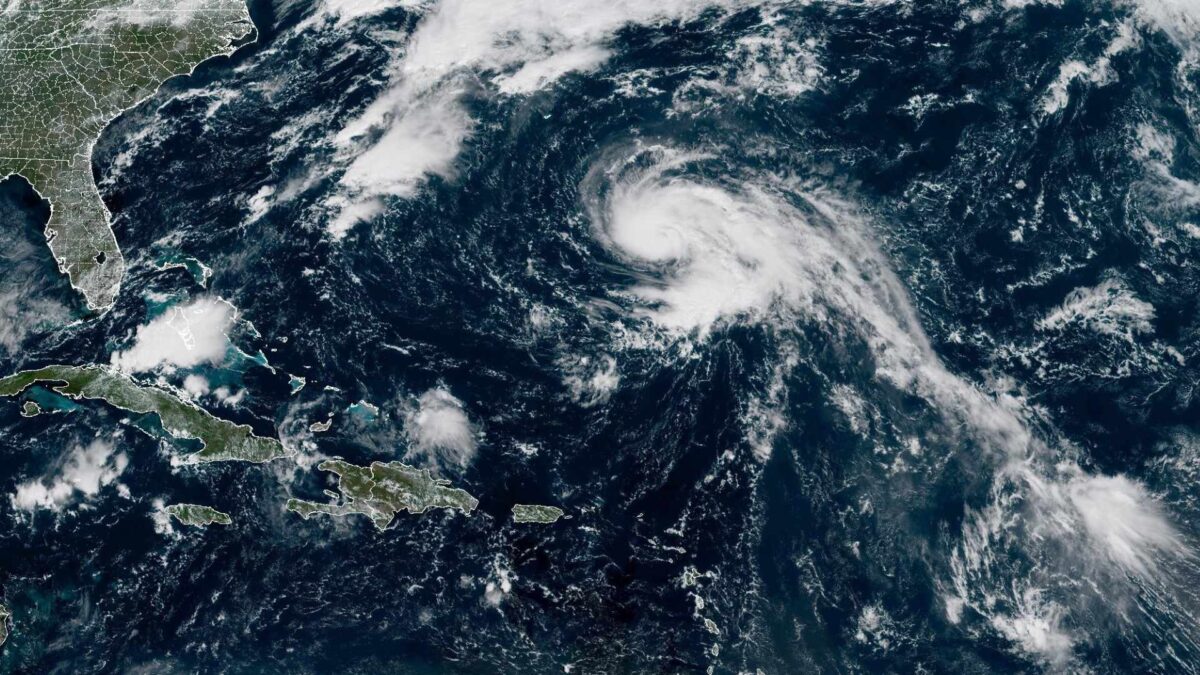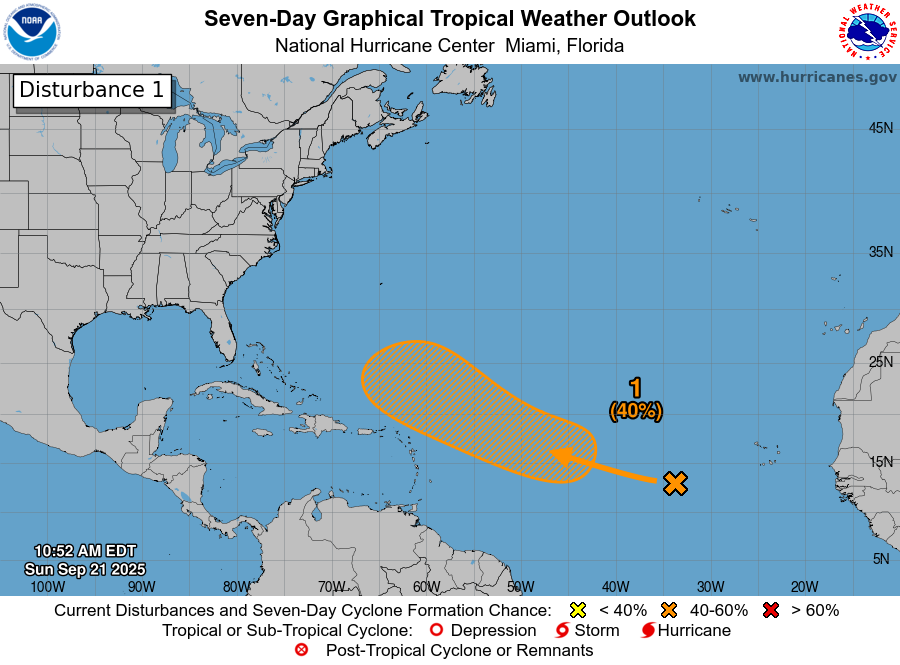
Tropical Storm Gabrielle Set to Strengthen into Hurricane

Tropical Storm Gabrielle, currently located about 390 miles southeast of Bermuda, is expected to become a hurricane later today, the National Hurricane Center reports.
The storm has maximum sustained winds of 65 mph (100 km/h) and is moving northwest at 12 mph (19 km/h).
Gabrielle is forecast to turn north on Monday and then accelerate northeastward by Tuesday. While the center of the storm is expected to pass east of Bermuda, residents are advised to monitor its progress. Tropical-storm-force winds extend up to 140 miles (220 km) from the center.
Swells generated by Gabrielle are expected to affect Bermuda over the next few days and could reach the U.S. East Coast from North Carolina northward, as well as Atlantic Canada, potentially creating life-threatening surf and rip current conditions.
No coastal watches or warnings are currently in effect.
Another system brewing
Meanwhile, a broad tropical wave is moving west-northwest across the central Atlantic, producing scattered showers and thunderstorms near the Cabo Verde Islands.
Development is unlikely over the next couple of days, but conditions are expected to become more favorable later in the week.
There is a 40% chance the system could develop into a tropical depression as it continues its west-northwest track.

2025 Atlantic Hurricane Season to date
The 2025 Atlantic hurricane season is proving quieter than anticipated, with activity so far falling well below early forecasts.
As of Sunday, seven named storms have formed, but only one, Hurricane Erin, which reached Category 5, has intensified into a hurricane. No major hurricanes have occurred. This contrasts sharply with predictions issued earlier this year. Preseason forecasts by NOAA and Colorado State University anticipated 13 to 18 named storms and up to 10 hurricanes, with several expected to reach major hurricane strength.
Meteorologists attribute the subdued activity to a combination of factors, including strong vertical wind shear across the tropical Atlantic, persistent dry air, and a weaker-than-usual West African monsoon, which has limited the number of storm-forming disturbances entering the basin.
While the season has been quieter than expected, forecasters caution that the peak months of August and September remain active periods for Atlantic storms. Warm ocean temperatures and shifting atmospheric conditions mean additional storms could still develop over the coming weeks.
Share this WeathÉire story:







